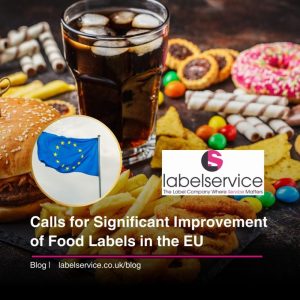There’s a lot of pushback on product packaging and inserts due to the waste of materials involved. Yes, it’s easier to put an odd-shaped product into a square box and label that box but now, with the growth of digital printing, there’s no need for packaging and inserts. Booklet labels are a great alternative – less material to waste and more room for information you want to include with your product.
Naturally, by working with booklet labels, you have more design options. With more design options, you have more opportunities to delight and engage the customer. Through that, you increase your chances of them buying your item and becoming a repeat customer. This makes booklet-style labels the ideal solution for packaging.
From the nutritional information chart to GMO labelling requirements (and more), there is a lot of information to include on food labels. In other industries, these requirements may change to safety graphics for chemical products, cruelty-free logos for cosmetics, or growing location for horticulture growers. While the location of this information needs to remain the same, booklet-style labels provide more room for everything else.
Now, instructions, tips, and translations can easily fit inside the label. With more pages, new design concepts can be tested inside, or it can even act as an instant redeemable coupon to be peeled off and brought back to the point of purchase. The possibilities are endless.
Smart packaging is an ever-growing trend where labels offer the customer something extra to enhance their experience, often using technology. This can include goodies like QR codes that link customers to helpful videos, NFC (near field communication) or RFID (radio frequency identification) labelling that takes customers straight to their app when their phone gets close to the label. Social media hashtags can also be used to enter contests, connect with the brand directly, or other customers. With booklet-style labels, you now have the space to design instructions in using this technology or even placing simple text-based information that customers will value.
Sensory marketing is a strategy to get customers to engage their senses with your product in order to connect with them on a deeper level and nurture a sale. Comforting textures, delightful sounds, and yes, engaging booklet pages aid in this goal. Once the customer picks up your product and opens your label, they are now more attached to the product. If you incorporate smart packaging content inside that label, consider it a win-win for both the customer and your brand.

















